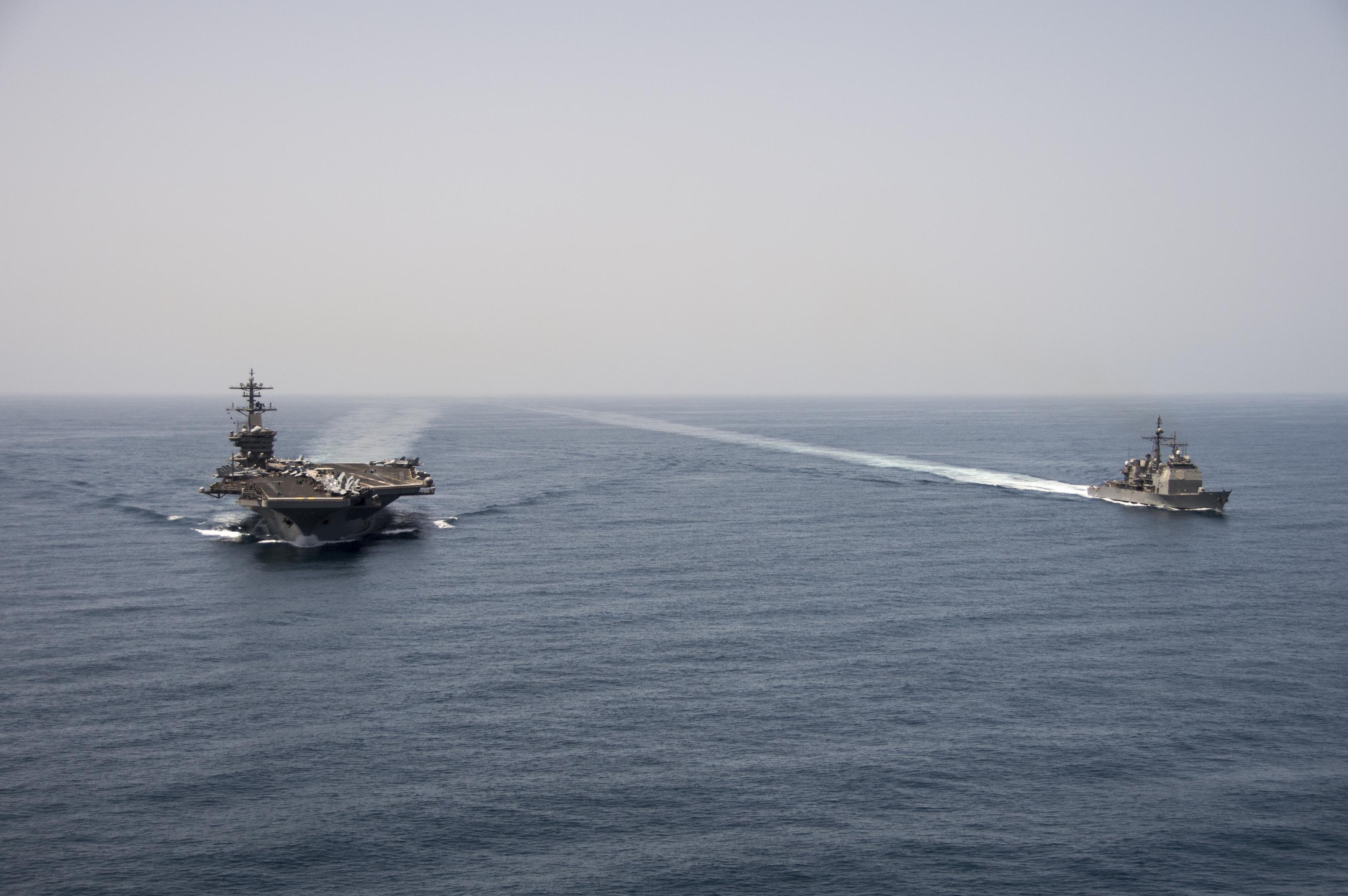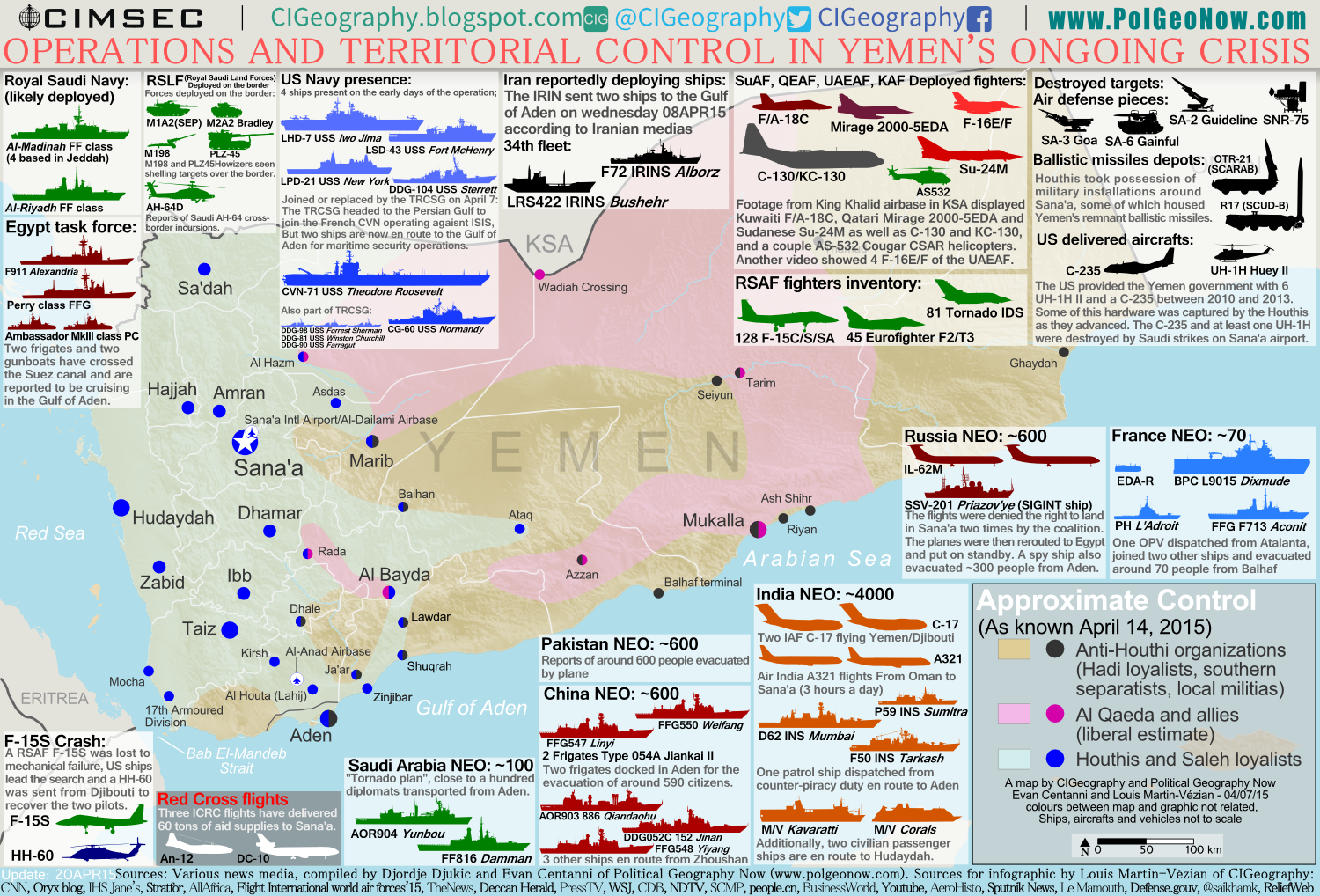
PENTAGON — The build up of U.S. naval presence in the vicinity of Yemen is the result of the deteriorating security situation inside the country and to “preserve options” to maintain maritime security in the region, Department of Defense officials told reporters this morning.
Monday, the Navy announced nuclear carrier USS Theodore Roosevelt (CVN-71) and guided missile cruiser USS Normandy (CG-60) had left the Persian Gulf bound for the Arabian Sea to join seven other U.S. warships in the vicinity of Yemen on Sunday.
The ships are there with “the very clear mission to ensure that shipping lanes remain open, to ensure there’s freedom of navigation through those critical water ways and to help ensure maritime security. That is the mission,” said U.S. Army Col. Steve Warren to reporters on Tuesday.
“What they also do of course, and let’s be clear, they have moved to that area in response to the deteriorating security situation in Yemen.”
The ships are also tracking a nine-ship Iranian cargo ship convoy that some press reports say are suspected of smuggling arms to Houthi rebels.
“We are watching this Iranian convoy. They remain in international waters in the Gulf of Aden,” he said.
“That is certainly one of the factors but not the reason they are there.”
The Iranian ships so far haven’t acted in a threatening manner, he said.
Roosevelt and Normandy joined seven other U.S. warships that are operating near the country in the throes of a civil war following the forced ouster of former president Abdu Rabbu Mansour in January by Houthi rebels.
The ships include the three ship Iwo Jima amphibious ready group (ARG) — USS IIS Iwo Jima (LHD-7), Fort McHenry (LSD- 43) and USS New York (LPD-21) embarked with the 24th Marine Expeditionary Unit (MEU), guided missile destroyers USS Forrest Sherman (DDG-98), USS Winston S. Churchill (DDG-81) and two mine counter measure ships — USS Dexterous (MCM-13) USS Sentry (MCM- 3).
There are also two U.S. oilers and a supply ship in the region for a total of 12 ships.

Before leaving the Persian Gulf, Roosevelt had conducted Operation Inherent Resolve (OIR) strikes against Islamic State in Iraq and Syria (ISIS or ISIL) militants.
Warren said the departure of the carrier and its air wing would not effect operations for OIR missions that have switched to land based strike aircraft.
Officials did not say if Roosevelt would lend its airborne information, surveillance and reconnaissance capabilities to aid the ongoing Saudi Arabia-led airstrikes that began shortly after the Houthi overthrow.





